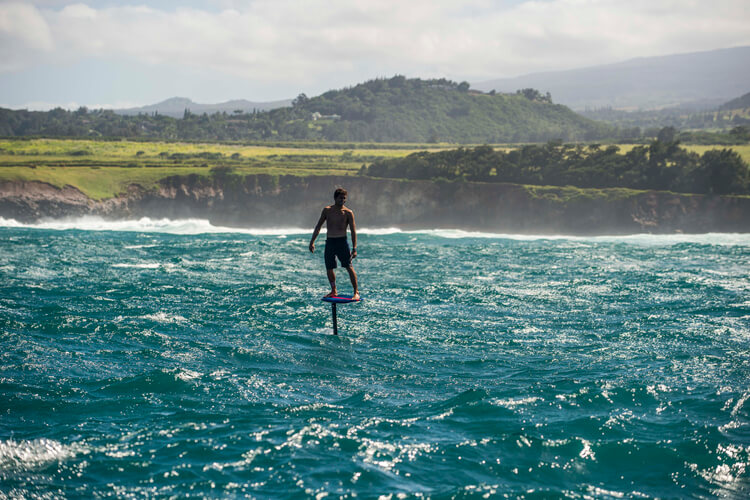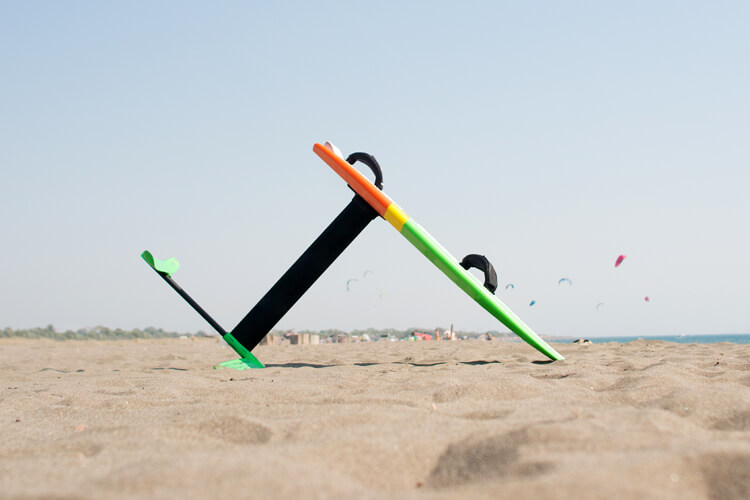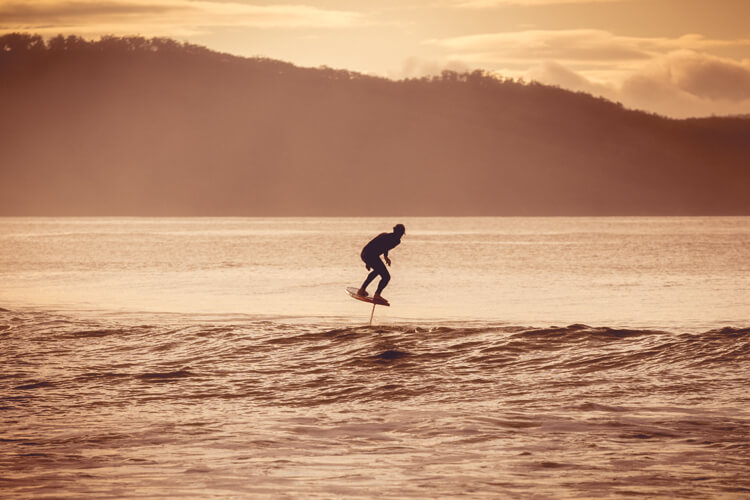Foils are becoming extremely popular and increasingly common in crowded surf breaks. The problem is that they can be potentially harmful.
Hydrofoils are not new.
They were introduced by Emmanuel Denis Farcot, a French inventor who registered a British patent for a piece of equipment that made vessels sail faster.
Farcot installed a series of inclined planes or wedge-formed pieces to the sides and bottom of a boat, which created a lift as the vessel moved forward.
The technology behind foils was later improved, fine-tuned, and used for military and passenger boat transportation.
More recently, high-tech yachts and transatlantic catamarans incorporated hydrofoils in their hulls.
With the millennium turn, foils were simplified, and the first portable, detachable models were launched for the kiteboarding and windsurfing markets.
The original idea was to improve the planing experience of wind sports, especially in low wind conditions and open waters.
However, the water sports industry quickly found a way to widen the market to wave riders and surfers in particular.
Why don't we attach a foil to a surfboard to ride virtually any wave?
The first results were spectacular and eye-catching.
You would see a surfer pumping his surfboard far from the shore and then riding waves that weren't even breaking.
With a foil surfboard, you can ride everything, the industry thought. And so, between 2010 and 2020, the first commercial foil surfboards started to hit the market at fairly reasonable prices.
Today, they're also used with handheld sails in a new sport called wing surfing.

A Razor-Sharp Knife
Foils are great, and they can be extremely fun.
The problem is that these hydrofoils are also extremely dangerous.
They consist of a mast, fuselage, front and back wings, and they're made of a mix of carbon fiber, epoxy, and metal parts.
Their high-tech profile and structure allow the rider to increase speed and control, reduce drag to minimum levels, and generate lift.
At high speeds, a foil cuts through water like a razor-sharp knife cuts butter, making it difficult for riders to reduce speed or stop their equipment quickly.
In 2016, an experienced Japanese surfer almost decapitated himself while riding a foil surfboard.
Immediately after, multiple-time Molokai 2 Oahu Paddleboard champion and professional big wave surfer Jamie Mitchell shared his thoughts on hydrofoils.
"In my opinion, foils are for open ocean swells, outer reefs, and en ocean swells, Outer Bombies, and places where there are no people or very few people doing it together," Mitchell stated.
"They're very dangerous and do not belong in the surf zone with the masses and general public."
Although there are talented and wise foil riders who know what they're doing, there is also a growing number of surfers taking them to crowded lineups and near-shore waters.
Regular surfers and swimmers are at risk.
A standard wipeout, an unfortunate drop-in, a normal kick-out, an unexpected freak wave, or a duck dive gone wrong can transform into a nightmare.
The foil's blade - or mast - is a deadly weapon ready to do damage at a public, crowded surf break.

Self-Regulation or Enforced Legislation
Some coastal communities in France and Australia have already banned foils from the bathing and main surfing areas.
Foil manufacturers must also play their part and warn customers and users of the dangers of foiling in crowded surf spots.
An increasing number of surfers want to try it, but they should know that they're putting their and other people's lives at risk by riding foils in popular breaks.
If foil enthusiasts cannot self-regulate, then national authorities must legislate on the use of foils in non-secluded waters.
There must be clear and strict rules and guidelines for all types of foiling - where to launch, riding zones, landing areas, etc.
A foil surfboard rider will fall off or wipe out like any other wave rider - the only difference is that instead of fins, they've got a razor-sharp structure.
Surfers are getting intimated by foilboarders.
"I don't feel confident pulling into waves with them on the inside, and they are ruining many surf sessions," a surfer commented on a petition against foilboards in the surf zone.
"As they grow more confident in their abilities, they are coming dangerously close to regular surfers."
"The foil apparatus is clearly a killer, and there will be deaths as a result of mixing foilers with surfers."
Wave riders believe fatal injuries will occur if nothing is done.
"As a lifelong surfer, I'm all for new ways to enjoy the ocean. The foil, however, is dangerous and needs to be used well away from crowded lineups," another surfer wrote.
"Our surf spots are already overcrowded and poorly regulated, with new surfers and experienced surfers alike acting foolishly and selfishly in the pursuit of a ride."
"Throwing foil boards into the mix creates a potential for a very serious and even fatal injury. Fun should give way to common sense. Foils are for big waves and the open ocean, not crowded lineups."
Foiling In Open Water Only
Overconfidence is also referred to as a danger factor.
"These things are unbelievably dangerous, and most people in the water today are way overconfident in their very limited ability to control their boards already. Foiçboards don't belong in the lineup," a shortboarder added.
Accidents involving foilboarders, surfers, and marine life are more and more frequent.
"The ocean is a dangerous place. Surfing can be a dangerous sport. We don't need to add any more risk to the sport. I would agree that a ban should apply to stand-up paddleboards and kayaks as well," a petitioner stated.
The majority of water sports participants say foilboards should only be permitted in open spaces or dedicated zone because no one should be worried about getting injured while waiting for a wave.
The new equipment is scaring traditional wave-riding enthusiasts and causing confusion in some of the world's most famous and busiest lineups.
Foils are a great piece of equipment to chase and enjoy waves that surfers can't ride. And there are plenty of those around.
If you own a foil surfboard, please keep it away from crowded lineups, and follow basic safety rules.
Think about the children who are learning to surf - play it safe, play it conservatively.
Respect your peers and fellow surfers and protect your health. Ride your foil in remote waters, and always wear a helmet. It's common sense.
